|
MCT Intes Micro Alter
6''
Paulo Bénard Guedes Homepage
|
Resolvi publicar aqui algumas
fotos e tecer alguns comentários à minha mais recente aquisição:
O
Alter por fora:
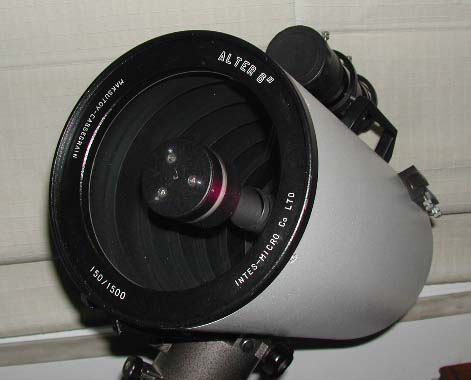
150mm; DF - 1500mm
f/10 Streel de 0.96
A robustez típica dos
Russos e o design à tanque de Guerra:

O Alter traz um saco de
transporte bastante pratico:

Com 2 almofadas para
aconchegar, o toque pessoal foi o plástico (com as bolinhas que apetece
rebentar):
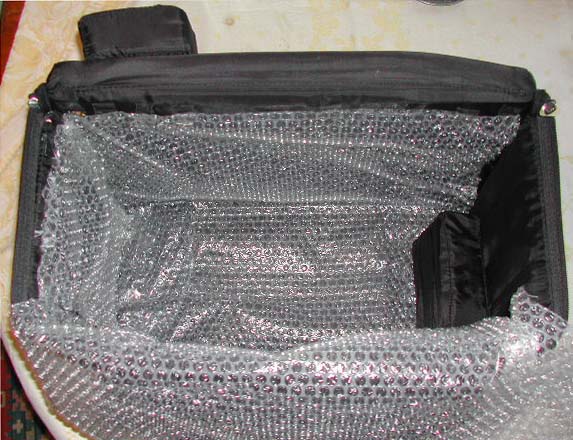
Traz uma tampa de metal à
frente do corrector:

É colimável no primário
(através dos parafusos visíveis na foto) e no secundário (foto mais abaixo),
e a focagem faz-se através da deslocação do primário (o focador é a roldana
preta):

O tubo possui 5 Baffles que
aumentam o contraste:

Além de ter uma pega para
transporte tem dois encaixes onde se pode meter Buscador e máquina
fotográfica:

Como não comprei buscador
meti o meu buscador do Dob 9X50:

Veio ainda com uma diagonal
Intes Micro de 1.25'':
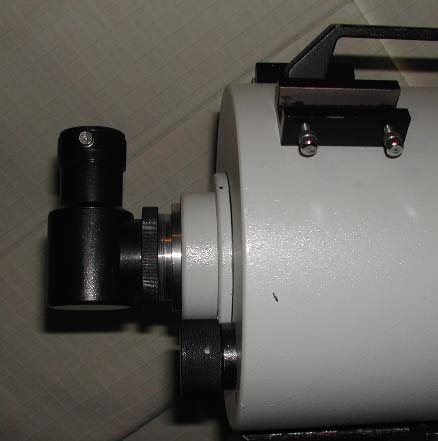
O encaixe é do tipo Dove
Tail:

O
Alter por dentro
:
o primário:

O menisco:

o fotógrafo no secundário:

o interior do tubo:
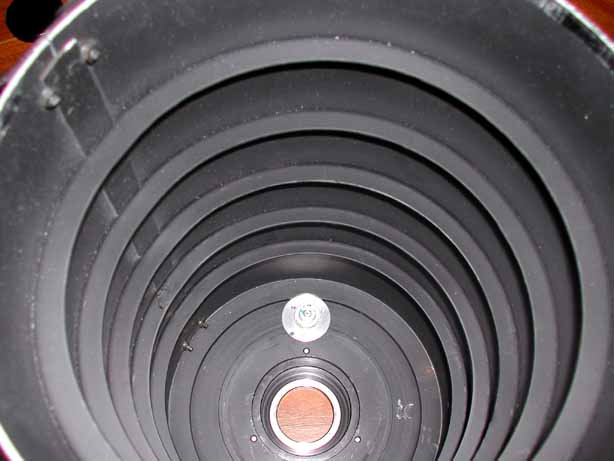
ampliação à zona do
focador:

A Rosca que prende a
estrutura interior e onde enroscam os acessórios (diagonal)

o sistema:


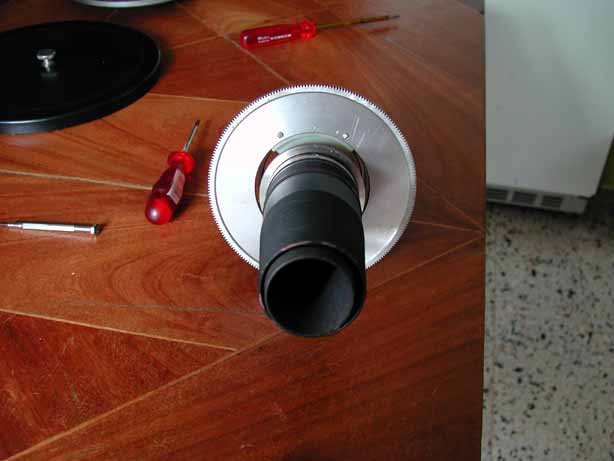
Batente
do primário. O orifício escondido pelo primário, esconde um pequeno parafuso,
cuja fixação é bastante volátil. Tentar ultrapassar o fim do curso do
focador pode causar que este parafuso fique solto, o que implica,
irremediavelmente, folga no focador e image-shift.

|
Sistema
Integrado de Baffles, focagem e suporte do primário:

-
tubo
baffle interior (fixo quando montado)
-
tubo
baffle cónico exterior (desliza sobre o tubo 1)
-
Encosto
do primário. O furo por detrás acolhe o parafuso que permite que o
guia da ranhura (6) se mantém em posição.***Este
parafuso pode ficar solto e assim causar image-shift***
-
Roda
dentada que engrena na roda do eixo do focador. A
estrutura branca esconde uma rosca grande, a qual permite a deslocação
do primário
-
Anel
de fixação. Este anel prende o exterior do tubo do
instrumento ao mecanismo aqui exposto e assegura que a roda grande
(4) se pode mover ao longo da rosca.
-
Extensão
do baffle interior. A calha tem um pequeno guia de bronze, o qual é
fixado através do parafuso que entra no orifício por detrás do
primário (3). A
parte com a ranhura prateada, normalmente está dentro do tubo
baffle (2)
-
Rosca
do baffle interior que protubera no fim do instrumento. Ai o tubo de
baffles interior é mantido firme em posição com uma contra-porca
que serve simultaneamente como rosca de saída de 2 polegadas
para colocação dos acessórios.
-
Anel
com bordo e parafuso de fixação. Serve
para encostar o primário contra o batente (3) Um
aperto excessivo, embora difícil de realizar, implica uma deformação
do primário e, por consequência, astigmatismo.
-
Anel
roscado que serve de contra-porca para prender o anel de fixação
do primário (8)
English(visitors
are invited to suggest corrections to ortografy and grammar of this text.):
-
inner
baffle tube (stays
fix in place once mounted in scope)
-
conical
external baffle tube (slides
on tube 1)
-
Back
holder of primary
mirror. The tiny hole,
usually hidden behind the mirror, holds a screw that keeps a
bronze slider in its slit (6) and serves to ensure that the
stucture does not turn but slide up and down.
***This
screw may get loose when one forces the focusser at the end of
travel and thus will cause image-shift***
-
Main
focusser gear which engages with the small focuser wheel (two wheels)
still in the tube.The whitish stuff
is a kind of plastic sitting on the threaded part behind it on
tube 1 and acts as a nut.The complete structure 1 will slide up/down
once mounted and turning the focusser wheel.
-
Positioning
ring. This ring will be
hold inside the protuberation of the rear part of the scope (there
the colimation screws sit). The rings ensures, that, while
turning the focusser, the white plastic part stays in position
and only trys to turns tube 1. The slider (6) ensures that the
structure does not rotate, but only slide. Thats the whole mechanism
of focussing.
-
Extension
of inner baffle tube. The
slit holds a small bronze slider, which
is kept in place by a screw passing the external baffle tube at
position (3).
-
Thread
of inner baffle tube which, once inserted in the scope, will
protuberate at the scopes rear. This is used to ensure that the
inner baffle tube (1) does not move a single bit, once mounted. A
nut is fixed on that thread, which is, by the way, the 2"
acessory thread. 2 very tiny screws keep the nut in place, so it
does not turn and fall off while one unscrews acessories (like
diagonal or reducer...).
-
Ring
with small border (border touches the primary surface).
This
serves to hold/press the primary against position (3)
Keep
pressure at minimum to avoid deformation of the primary, which
will cause astigmatism (can be reveresed by applying less
pressure).
Keep
pressure to low, and the primary will get loose and cause severe
aberrations and mirror shift. The ring is kept in place with a
very tiny screw.
-
Threaded
ring, which keep the mirror holding ring (8) in position. Do not tight
it too much, nor too less(see 8).
|





















